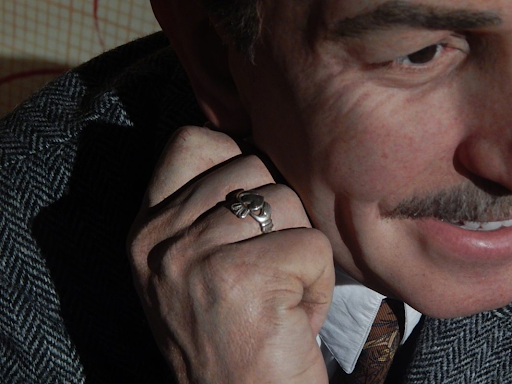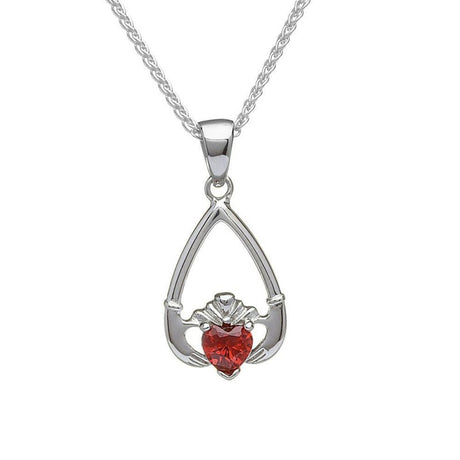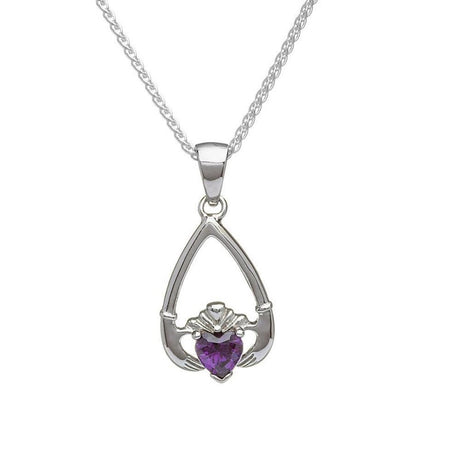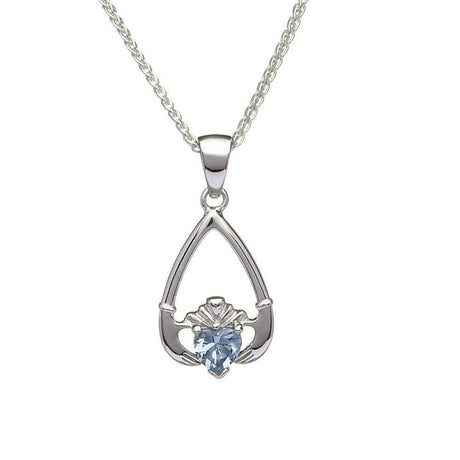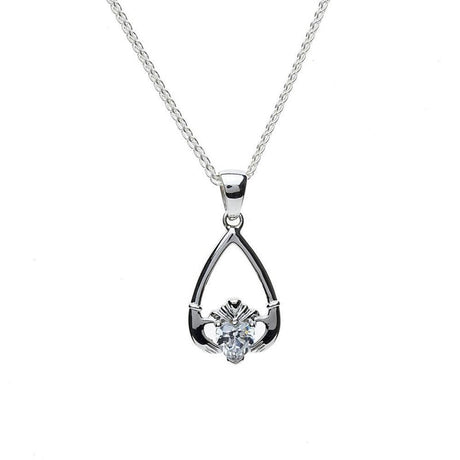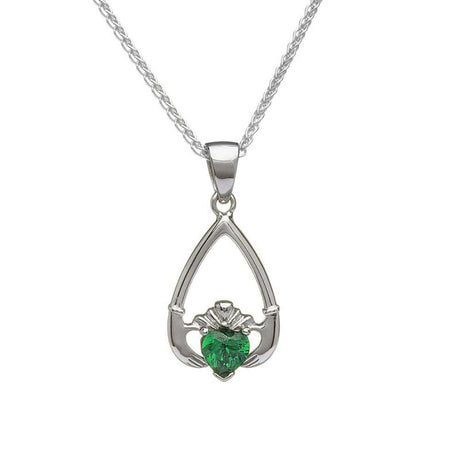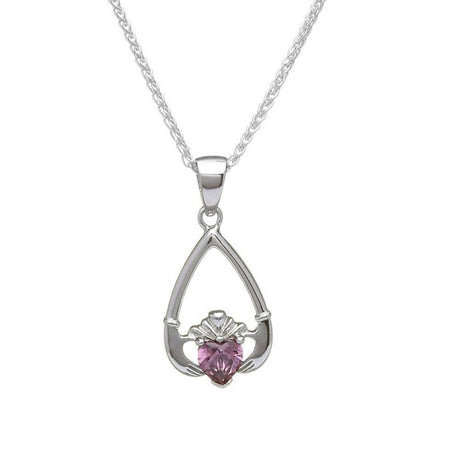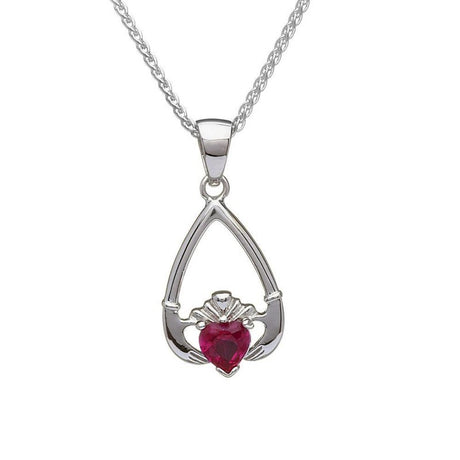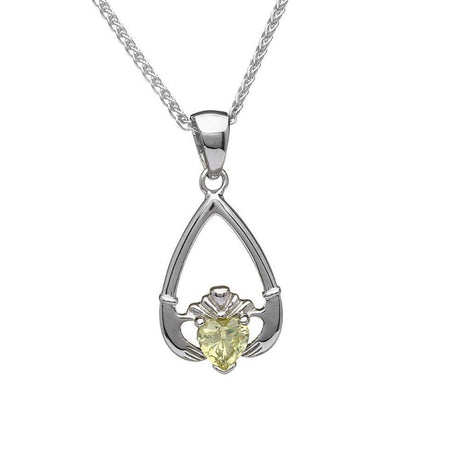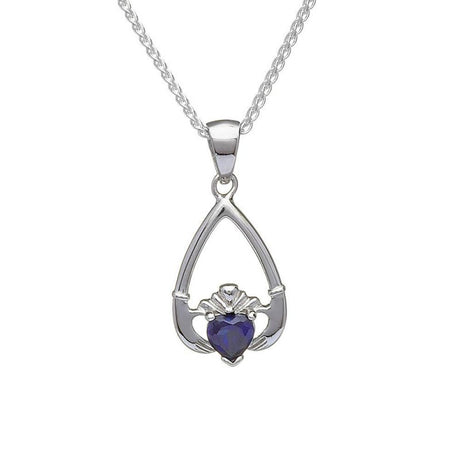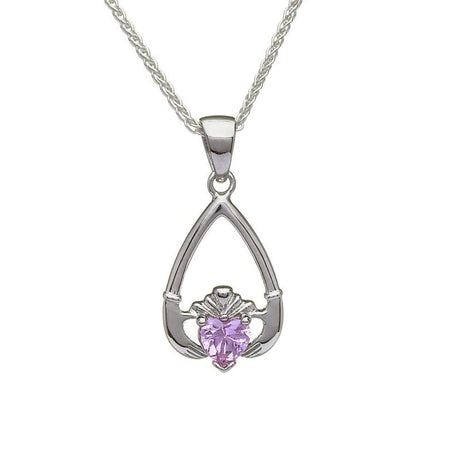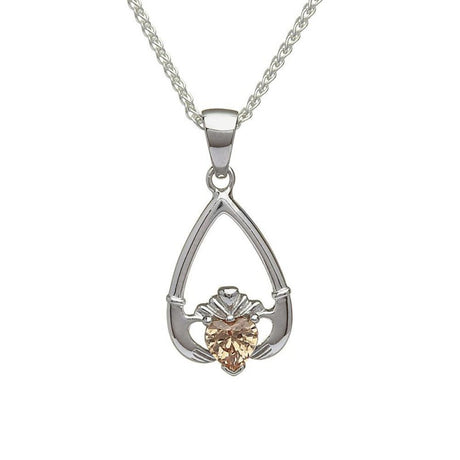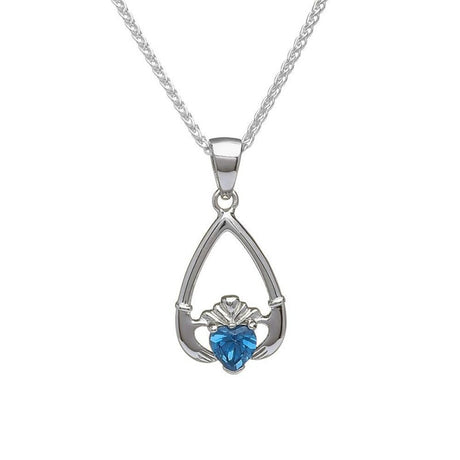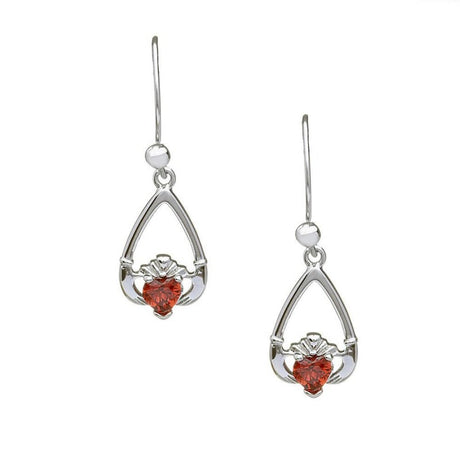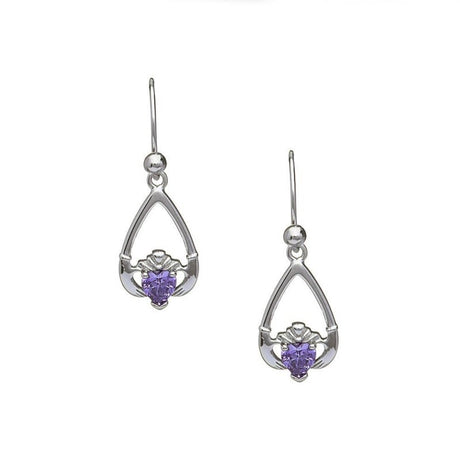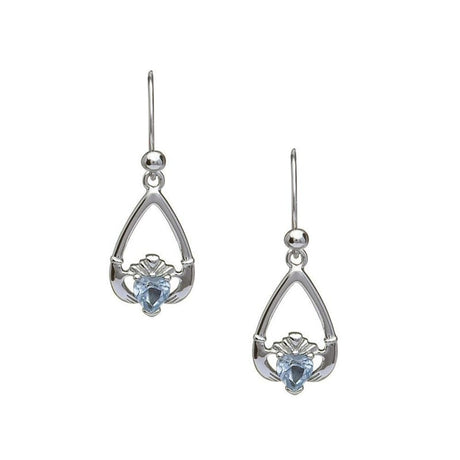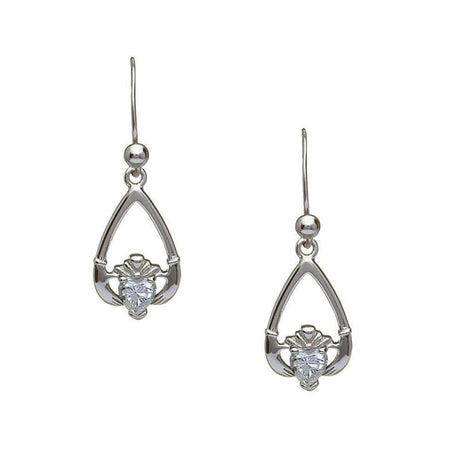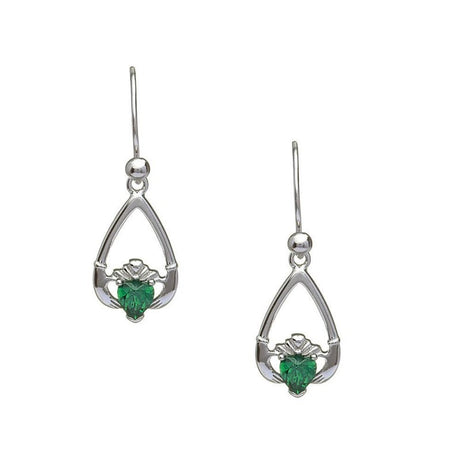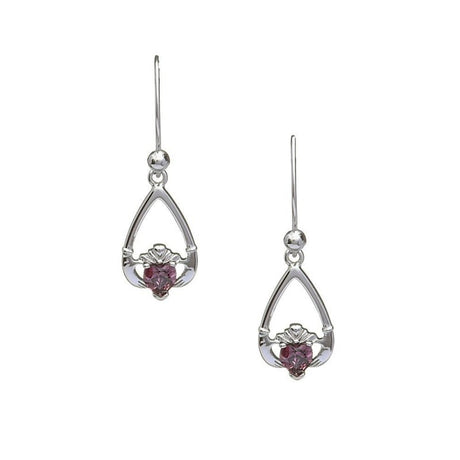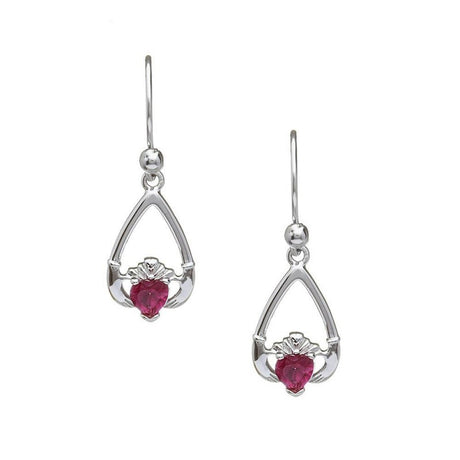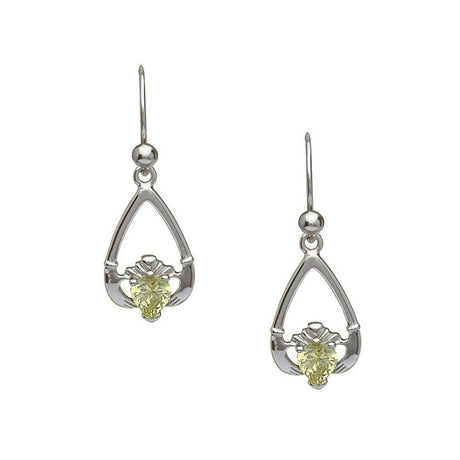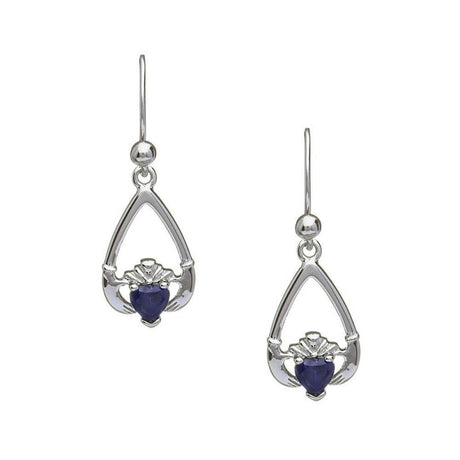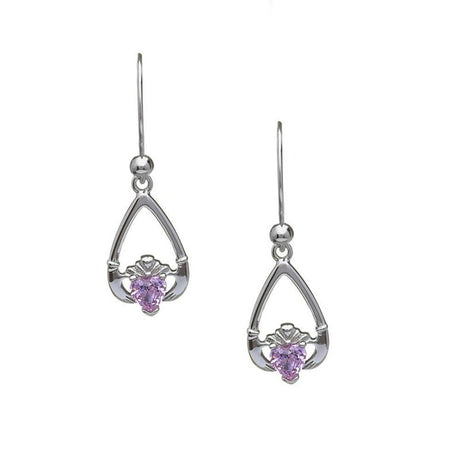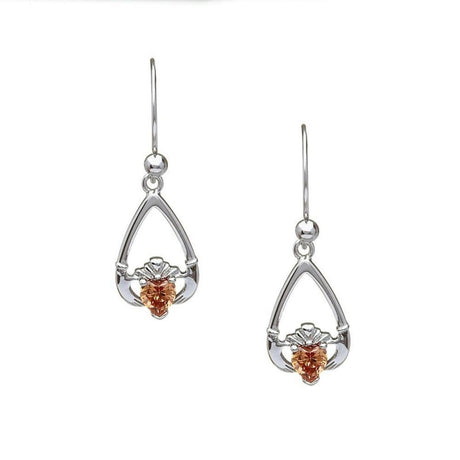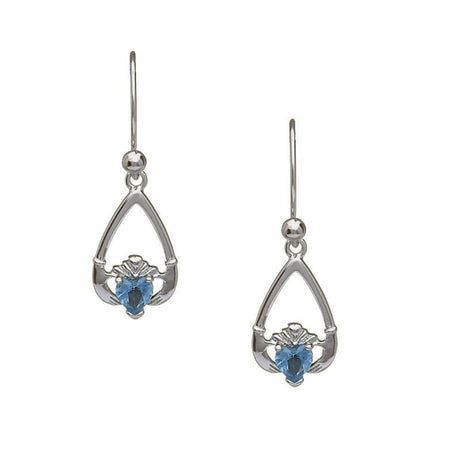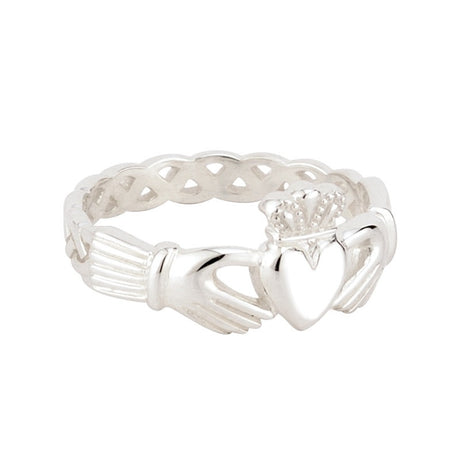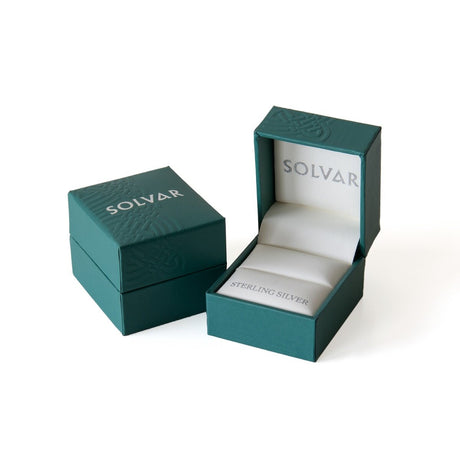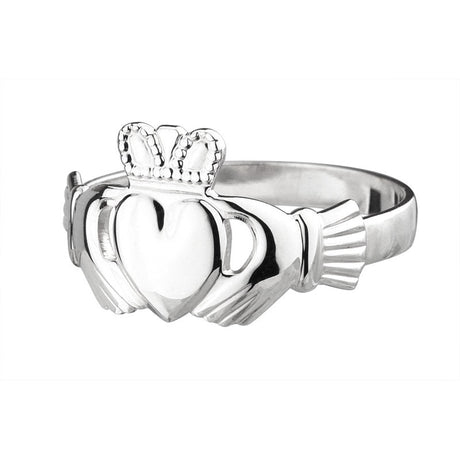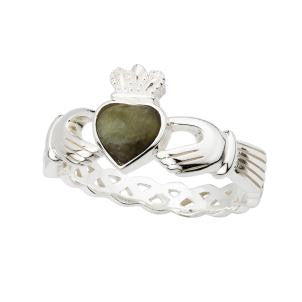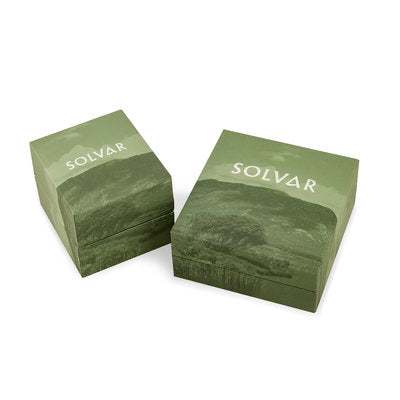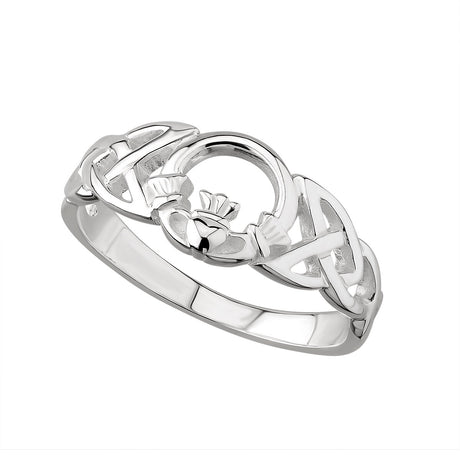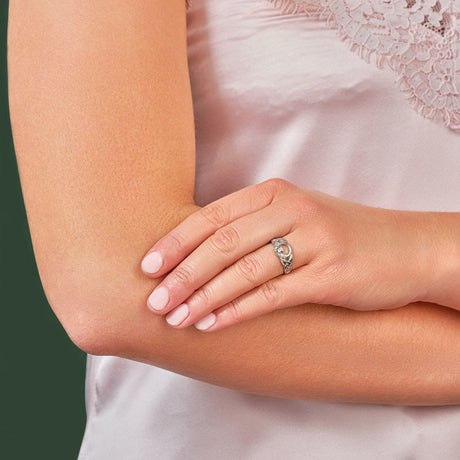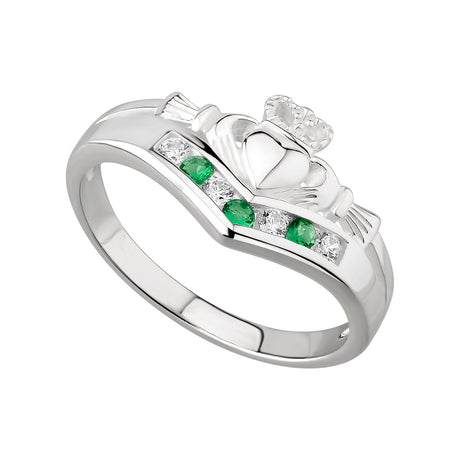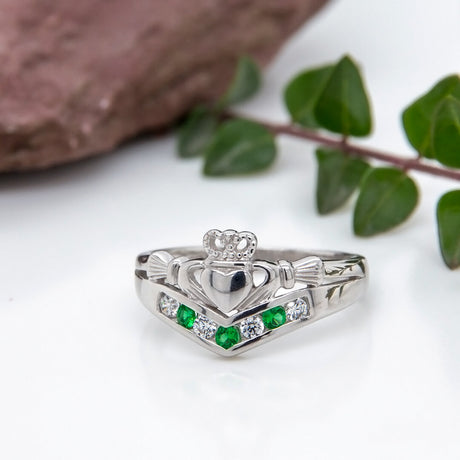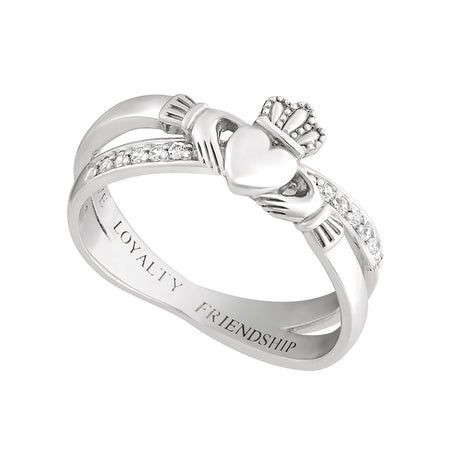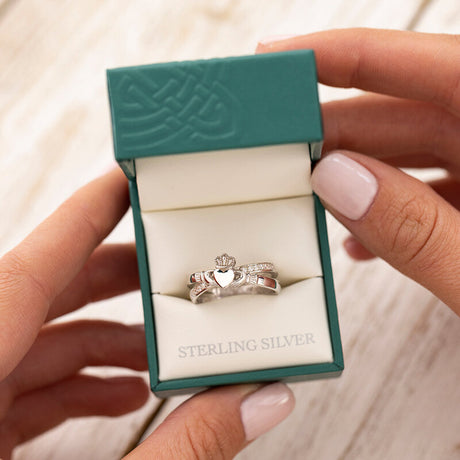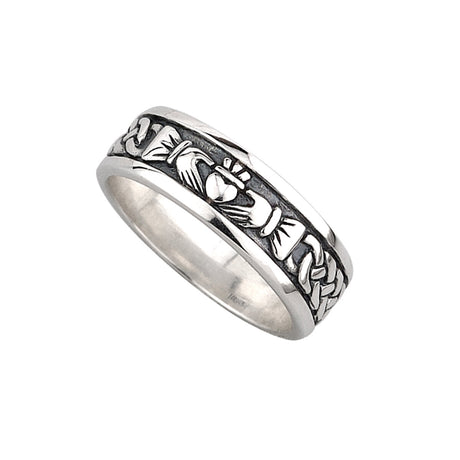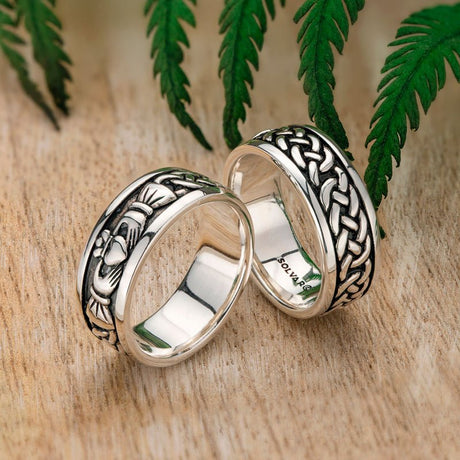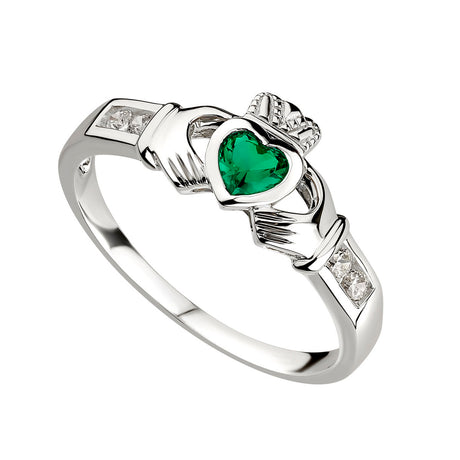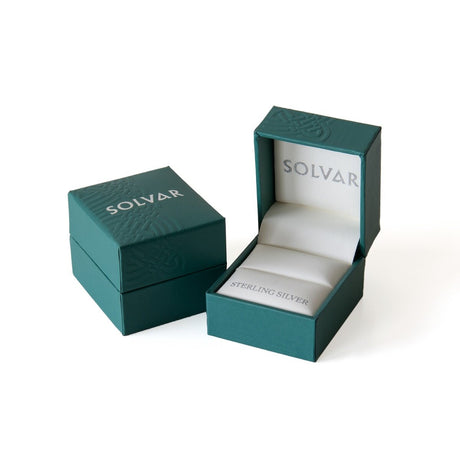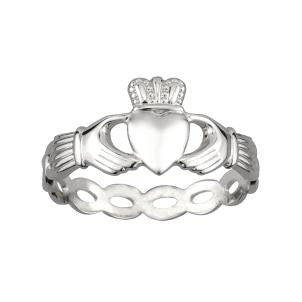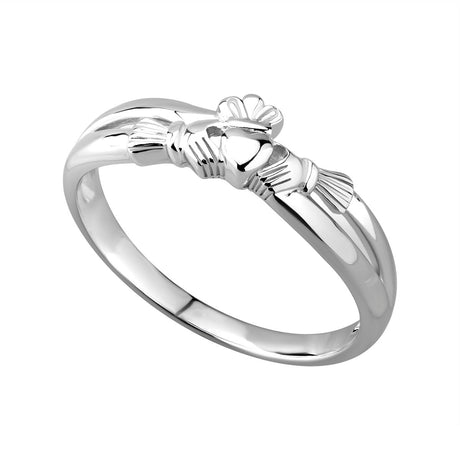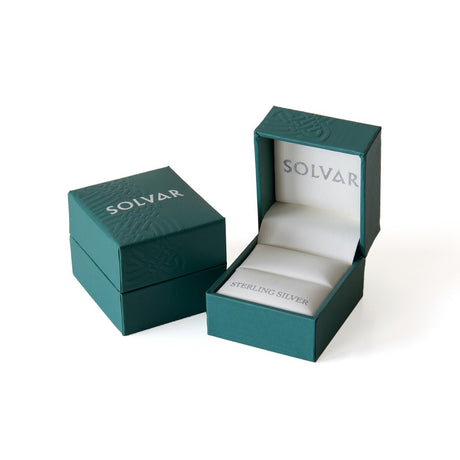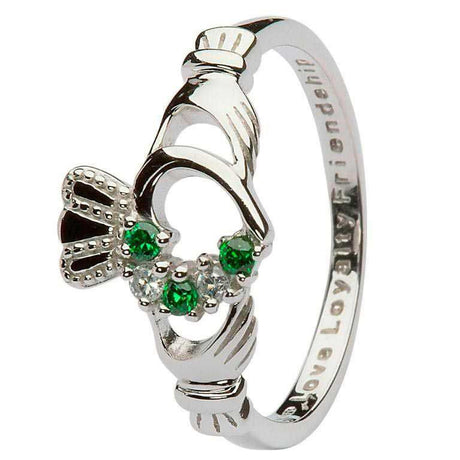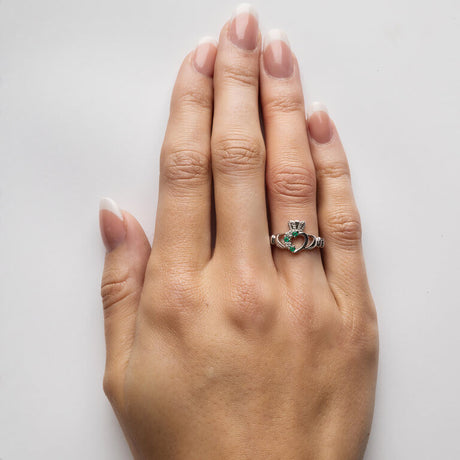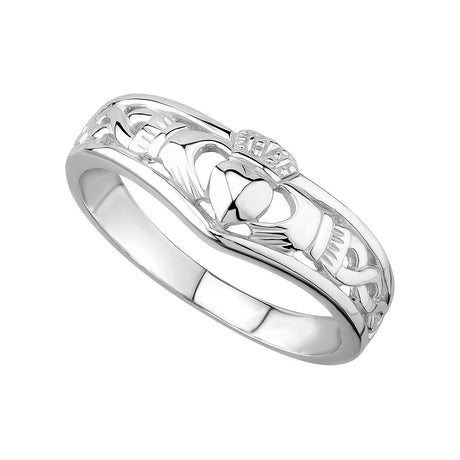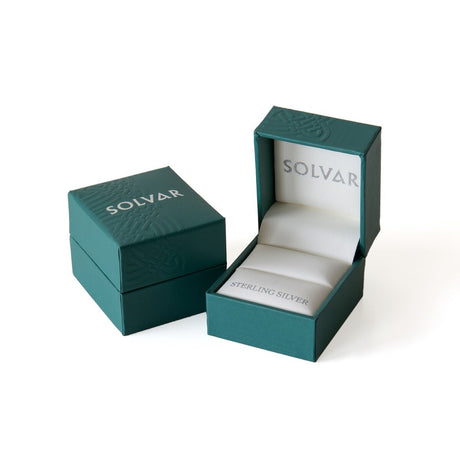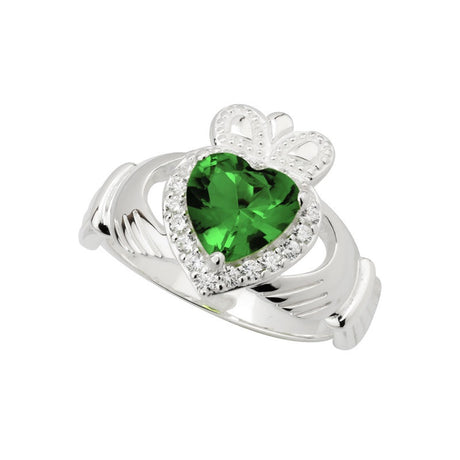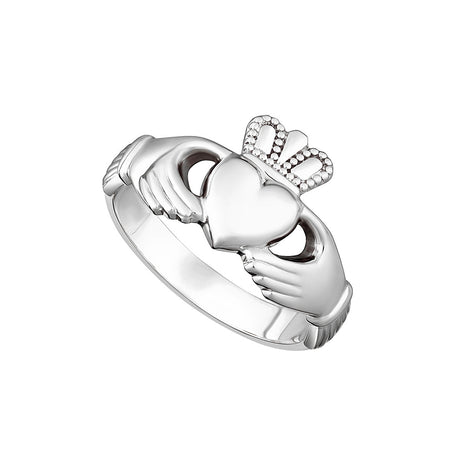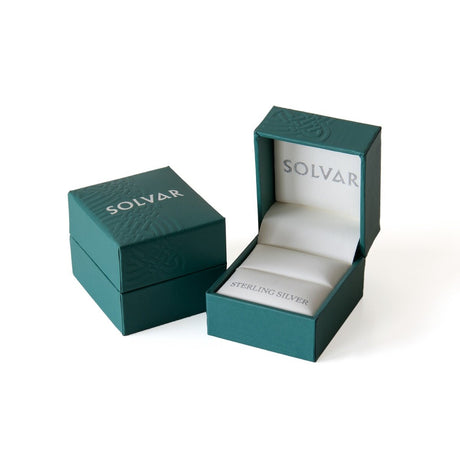The Claddagh symbol, with its distinctive design of two hands holding a crowned heart, is more than just a beautiful, and often deeply meaningful, piece of jewelry — it’s also a powerful emblem of love, loyalty, and friendship across several centuries of Irish history and culture, and as we’re about to find out, it’s a lot more than that too!
Here we go deep into the Claddagh's rich history, its meanings and significance, the context in which it evolved, and how it translates into modern contemporary culture and products.
Join us on a journey through the ages to uncover the many layers of the Claddagh symbol, a recurring motif of that magical place where Ireland and Irishness overlaps with connection, loyalty and love.
Let’s get started!
The Historical Origins of the Claddagh Symbol
The origins of the Claddagh symbol can be traced back to the small fishing village of Claddagh, located near Galway city in the west of Ireland.
Click to read about 13 of Galway's Breathtaking Wonders
The design is traditionally attributed to Richard Joyce, a native of the “City of the Tribes” who had set sail from Galway in or around 1675, headed for indentured servitude in the West Indies, but who was enslaved by sea-roaming Algerian pirates when the whole ship on which he was traveling was captured.
During his period in captivity, Joyce was apprenticed to an Algerian goldsmith and learned his craft, it seems over many years. Upon his release, following a peace treaty between England and Algiers, he made the long trek to return to his hometown in the west of Ireland, bringing with him in his mind the inspiration for the Claddagh ring.
The earliest known Claddagh rings date back to around 1700, including an inscription of Richard Joyce's initials. Soon, these rings started to become a popular symbol of love and commitment, often passed down as heirlooms within families.
Over the centuries, the design of the Claddagh ring has remained largely unchanged, underlining its timeless appeal.
The Symbolism of the Claddagh
The Claddagh symbol is, of course, relatively simple: two hands and a heart beneath a crown.
But each element brings with it a rich depth of meaning.
- The Heart: Representing the love that binds people together.
- The Hands: Symbolizing friendship, the cornerstone of every meaningful relationship.
- The Crown: Emblematic of the central role of loyalty and devotion to prosperity.
These three elements—love, friendship and loyalty—are often encapsulated in a motto frequently associated with the Claddagh: “Let love and friendship reign.”
This combination of symbols makes the Claddagh symbol a profound emblem of enduring bonds — whether romantic, familial, or platonic — and usually, although not necessarily always, through the lens of Irish culture and heritage.
In one way, it’s possible to see the Claddagh symbol as a modernization of the all-powerful ancient emblem of “the trinity”, which can be seen in everything from the Father, Son and Holy Ghost, to the triple deity of ancient Irish goddesses, to the famed Celtic trinity knots and knotwork symbols.
Click to read more about Celtic Knots and Knotworks
From Love to Luck: The Cultural Context of the Claddagh
The Claddagh symbol may be closely associated with the region of Galway, where it originated, but it has — like many a Galway person for centuries past — spread its wings to become a popular symbol of broader Irish heritage all around the world.
The Claddagh ring is perhaps the most visible representation of the Claddagh symbol in the world today, and these often play a key role in Irish cultural practices and customs, including engagement and marriage but also as a symbol of enduring friendship.
The Claddagh ring is traditionally worn to signify different relationship statuses, depending on how it is worn.
And it’s important to take note of these different use cases, as one careless decision could subliminally send an important message to everyone you meet — provided they too can speak this unspoken language!
- Worn on the right hand with the heart facing outward, the wearer may well be communicating that they are single and seeking a relationship.
- Worn on the right hand with the heart facing inward denotes that the wearer is already in a committed relationship, thank you very much for asking!
- Worn on the left hand with the heart facing inward, advertises that the wearer is engaged and/or married, so eyes elsewhere, buddy!
These customs can provide a subtle yet extremely meaningful way for individuals to communicate their relationship status — much better than a Facebook status update, right?!
This being the language of love, though, it should be obvious that lost in translation might still be a thing!
Away from love and relationships, the Claddagh symbol also features in various Irish traditions where luck plays a part.
Wearing the Claddagh in some form is often said to bring good luck and protection to its wearer.
In this regard, the Claddagh is often given as a gift in a token of friendship, symbolizing trust and loyalty, of course, but also the sense that the wearer might benefit from a nice slice of good fortune along the way — and who amongst us would not welcome a little bit of luck and protection on our journey through life?!
The Claddagh in Modern Culture
In contemporary times, the Claddagh symbol has found new expressions and applications, becoming a beloved motif in various cultural and commercial contexts.
1. Claddagh Jewelry
Beyond the traditional Claddagh ring, the symbol is now featured in a wide array of jewelry, including Claddagh earrings, bracelets, necklaces, brooches and jewelry boxes — as well as non-traditional types of Claddagh rings, such as Claddagh bands.
These pieces often incorporate modern design elements while retaining the classic Claddagh symbolism, renewing its traditional appeal to a modern, global audience.
2. Claddagh in Fashion and Art
The Claddagh symbol has also made its way into fashion and art in recent years.
Artists and designers have drawn inspiration from its timeless message to create works that celebrate, and build upon, its significance.
The Claddagh is frequently, these days, seen in everything from clothing designs to home decor items … and, reflecting its versatility and enduring appeal, it has even become a popular source of inspiration for tattoo art.
 Photo via Pinterest
Photo via Pinterest
3. The Claddagh Symbol in Popular Culture
The Claddagh has been referenced in literature, films, and television shows, often — but not always — as a symbol of Irish heritage or as a romantic motif.
One television series from 2012, set in Montreal, Canada, took the Trust/Loyalty/Friendship triangle … and layered a gangster story on top.

Elsewhere, in one memorable scene from Buffy the Vampire Slayer, one of the most popular TV series of the 1990s and 2000s, the character Angel presents a Claddagh ring to Buffy, in the processing doing a fine job of outlining the meaning of the symbols to his paramour and fellow bloodsucker.
Its inclusion in popular culture helps to keep the symbol relevant and accessible to new generations.
4. Claddagh as Tourist Attraction
Galway, the birthplace of the Claddagh symbol, has embraced its heritage, making the Claddagh a central theme in local tourism.
Visitors to Galway can explore the historical village of Claddagh — memorably described in one famous travelog of the 1930s as “nothing is more picturesque in the British Isles than this astonishing fishing village of neat, whitewashed, thatched cottages planted at haphazard angles”.
In Claddagh tourists can visit jewelry shops specializing in Claddagh rings, and learn more about the symbol's history.
The Claddagh as a Symbol of Identity
For many people of Irish descent, the Claddagh symbol serves as a powerful connection to their heritage and ancestry. It represents a tangible link to the past, carrying with it the stories of love, loyalty, and friendship that echo through time and place.
The Irish diaspora, particularly in North America, has embraced the Claddagh as a symbol of their roots. The Claddagh ring is often passed down through families, serving as a reminder of their heritage and the enduring values of their ancestors.
One example comes from one of the most famous Americans of them all.
Walt Disney’s ancestors are believed to have left Kilkenny, in the south-east of Ireland, for the United States in the 1830s and ‘40s, and the cartoon maestro was so proud of his Irish heritage that he visited the old sod on several occasions — here he can be seen here shooting the breeze with Eamon De Valera in the 1940s.
And Disney is said to have worn a Claddagh ring as an emblem of his attachment to Ireland. We’re not sure that any photographic evidence of that exists, but this photo of Walt’s waxwork in Orlando is a good second best!
 The Walt Disney waxwork in Orlando. Photo via CladdaghRings.com
The Walt Disney waxwork in Orlando. Photo via CladdaghRings.com
Claddagh in Commercial Use
The commercial appeal of the Claddagh symbol extends beyond jewelry. It is also widely used in various products and marketing strategies, emphasizing its cultural significance.
Many businesses, especially those with Irish connections or themes, incorporate the Claddagh symbol into their branding and marketing.
Pubs, restaurants, and shops the world over have been known to use the Claddagh symbol in either their logos or their decor in a bid to create the uniqueness of the Irish atmosphere.
In addition, the Claddagh symbol is a popular choice for gifts and souvenirs, especially for those seeking to give a meaningful token of affection.
Items such as mugs, keychains, and decorative plaques featuring the Claddagh design are commonly found in Irish heritage gift shops around the world — and you can find some of those on RealIrish too, such as this gorgeous leather-wrapped pint tumbler from Blackthorn Leather.
The Claddagh symbol’s status as a symbol of love and commitment has, of course, also made it a frequent presence in wedding and anniversary gifts, with personalized Claddagh rings engraved with names and dates making for cherished keepsakes to celebrate that special day.
In conclusion
All told, then, the Claddagh symbol is much more than just a piece of jewelry or a decorative motif.
Over several hundred years, it has evolved into a profound and deeply felt expression of core human values, a status that has only been further set in stone by the fast-tracked culture of the modern Internet age.
Worn as a ring in the traditional form — do be careful which way you wear it! — the Claddagh is, of course, a cherished emblem of Irish heritage.
But it is more than that too.
Whether you have that deep Irish heritage and an elaborate family tree, or your Irish background is something you’re only starting to explore, or you’re a vampire expressing your undying (naturally!) love to one of your own, the Claddagh symbol continues to inspire and unite people the world over with its message of love, loyalty, trust, truth and friendship.

